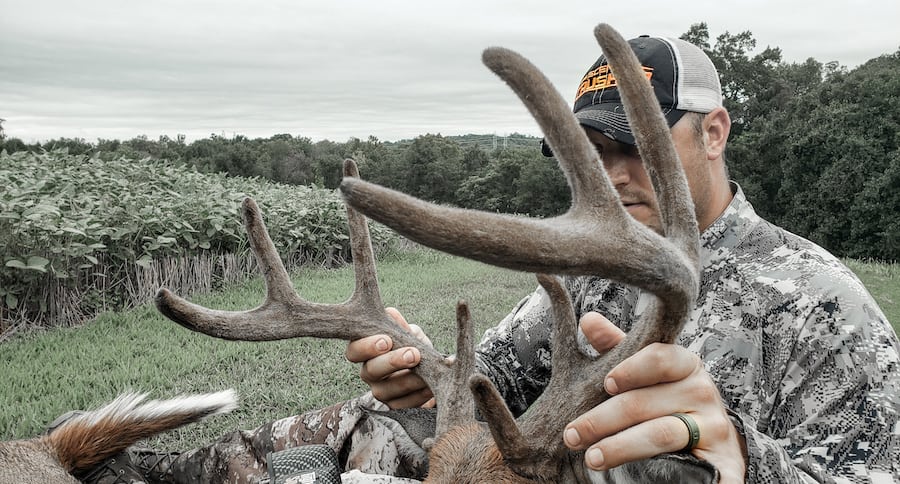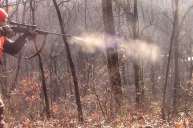When two paths diverge in the woods, I'll step off the trail, look for deer sign and begin to make my own path.
Hunting since the age of 10 with my father, our hunting seasons were often a repeat of the season before. Mom would always ask if we "even went hunting" as the lack of meat in the freezer reflected our season, year in and year out.
Once we lost our property lease and built a new hunting cabin, we were forced to try new methods to bring home the bacon. This was when I first started to learn successful hunting meant finding what works and capitalizing on that notion.
Being 31 years old now and having over 20 years of experience under my belt, I've had my fair share of success and failure in the woods. Each year I continue to push the envelope, and when it comes to hunting public-land deer, the further away I get from the repeat button, the better.
Public-land whitetails are no different than private-land whitetails. Their food sources are often similar, they move the same, look the same and even taste the same. About the only difference is the hunting pressure surrounding them. Just like most things in this world, if you want to succeed, you have to learn to adapt. Go a little further, hunt a little harder and don't be afraid to push the envelope.
1. Finding unusual access points

Rivers and Streams can offer an easier way to access remote areas than hiking by foot.
For years, my hunting buddies and I have been wanting to get further away from other hunters on a particular property we hunt in New York. Our strategies have worked, and a couple years ago we packed out our first whitetail buck four miles from the closest access point. Since then, we've tried vamp it up even more to look for small pockets of hard accessible areas on public ground. What we've found so far looks extremely promising.
We started using the blue lines on the map as entry and exit points. What might those blue lines be? You guessed it, they're water ways.
Most hunters view these areas on a map and think "barrier." This past winter, we spent a great deal of time scouting our public lands and found that crossing some of these waterways (they were frozen at the time), brought us into areas we could almost deem unchartered. We made a plan to get some rafts and head downstream in the summer to do some scouting.

Rafts can offer access to areas otherwise not accessible by most hunters.
We turned our trip into a "hunting moon," meaning we were able to bring our wives with us. We packed up our USCG-approved Alpacka rafts, which are legal on most bodies of water, and hit the rapids. A 4-mile float downstream brought us to areas we would have to hike 6 miles in order to get to normality. The float was much quicker, quieter and efficient. The rafts allowed us to stow our gear in the cargo ports, and I know I'm foreshadowing, but they're strong enough to haul you, your gear and a deer all on one raft.
We made our way downstream, marking areas we could exit later in the fall. Because the area doesn't have cell phone service, we were using the Garmin inReach Mini to stay connected to our families. A great tool to not only mark your location and trip, but a way to provide safety and security while going a little farther off the beaten path.
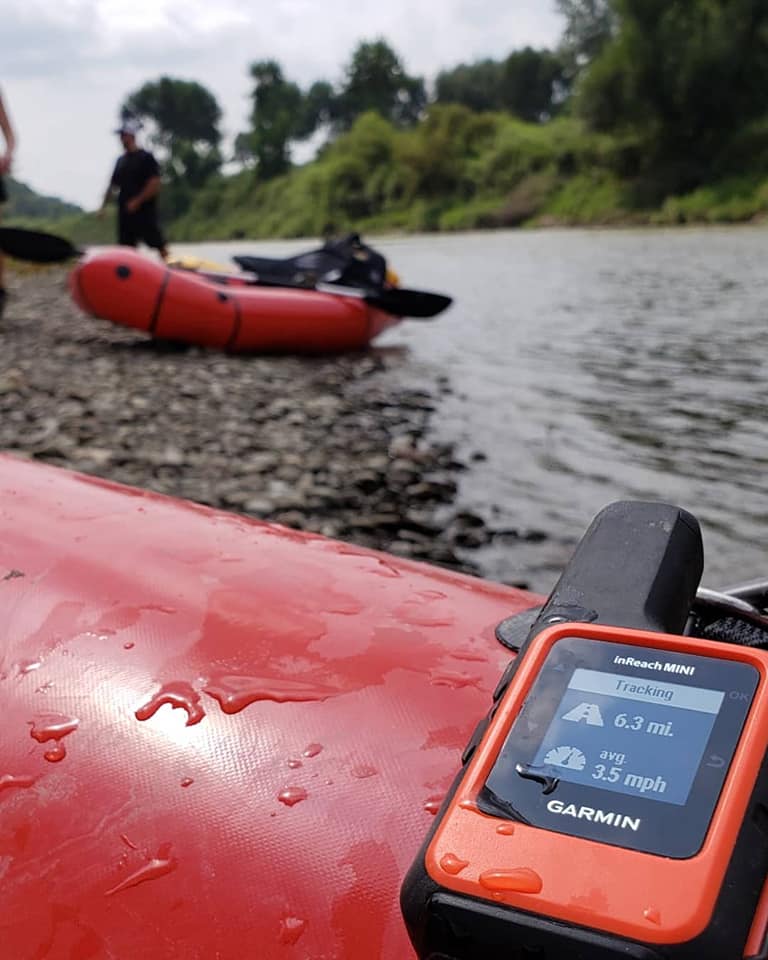
Finding and marking access points that had promising deer sign should help come fall.
There aren't many rafters in the river we floated, so going in the summer during daylight provided us with a good look at what we'll be getting ourselves into come the fall. Perhaps you've found yourself looking at your maps and saying, "That's seems like a pretty hard area to get to." If so, there's a good chance most hunters are saying the same thing and thus providing you with some exclusive hunting ground.
2. Hanging observation stands
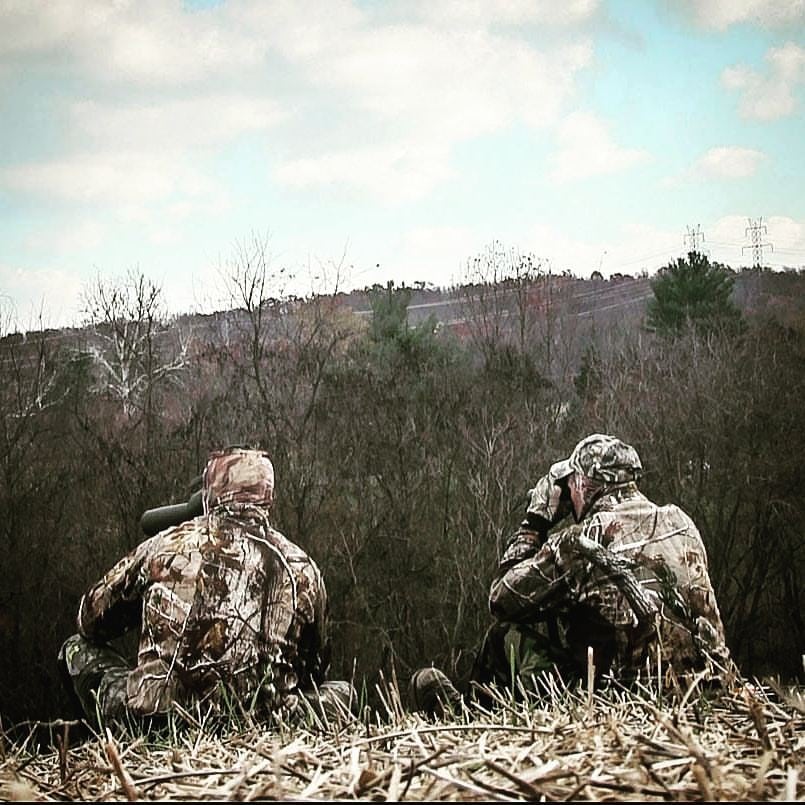
Whether it's an actual stand or a vantage point, take one day and observe the area you want to hunt.
That's right. Put up a stand, whether it's in a new piece or an area you're familiar with, just to observe. If you set out on hunting trips, like many often do, you may find yourself hunting your first day with little to no success. All the great hunters I know, especially those who hunt public land, say they spend just as much time scouting as they do hunting when they're away on their trips.
Let's say you have a five-day trip planned to hunt a new piece of public land. If you use the first day to scout, that leaves you with four days to hunt. Four days to hunt is the same as eight sits, split between morning and evening. To ensure you're successful on those eight sits, it's always good you spend your first day scouting.
A good way to do this is by heading out in the first morning and look for deer sign. If you've done your map homework, you should have a pretty good idea where these deer will be. Once you get in there, begin taking notes. If you feel you have a good idea where the deer are, now's your chance to see exactly what they do. An observation should allow you to watch the area you want to hunt from a distance without having any impact on the deer. Setting up an observation stand can increase your success rate on your hunts quite a bit if you do it correctly.
3. Be mobile, be stealthy.

Dustin (Author) shot this buck from the ground 4 miles back, from the ground, taking small steps along the way.
Public land can offer some of the best deer hunting, even when there's high hunting pressure. When mature bucks know they're being hunted, they'll often become so discreet and nocturnal, you may think there are no deer in that area.
The best way to know is by scouting, using trail cameras and checking for deer sign. Once you've determined there's a big buck in the area, you'll want to take note of your things like pinch points, feeding areas and bedding areas. Then it's time to become stealthy.
Snipers in the military are most effective when the enemy comes to them. But when the enemy doesn't come to them, they have to send in forces on the ground to go in and get them. For the ultimate attack on some of America's most wanted, you send in the elite. Just like the military, if you want to go after that mature buck, sometimes sitting around in a treestand just won't cut it.
To keep a keen sense on my wind direction and thermals, I choose vapor technology over powder-wind indicators. It's much lighter than powder and can detect the slightest breeze and thermal currents. The new Cirrus Wind Indicator not only detects my wind, but it helps keep my phone charged while I'm gone for my full-day hunts.
I'm a scent control freak.
With my human odor under control, I turn my focus to the terrain features. Whitetail hunting can be quite easy when the deer go from bedding area to the food sources.
Whether it's a food plot, a crop field or a natural browse, hunting along the food sources and their travel routes can usually produce. It's just generally more effective in the early season or later after the breeding season. But, when a mature buck knows he's being hunted, he'll hang in those hard-to-find areas. This is when being stealthy can pay off.
I'll very slowly take between two and five steps and then glass. Most things in the forest grow up and down, a deers body is horizontal, so my first focus is looking at the items that are parallel to the ground.
While doing this, I'm focusing on colors. And, if it's rainy, I'll look for more of a grey color. When it's sunny, I'll look for large patches of brown. Deer will often hold still with the presence of a predator, so finding them before they find you is huge. Take your time!
4. Hunt in bad weather.
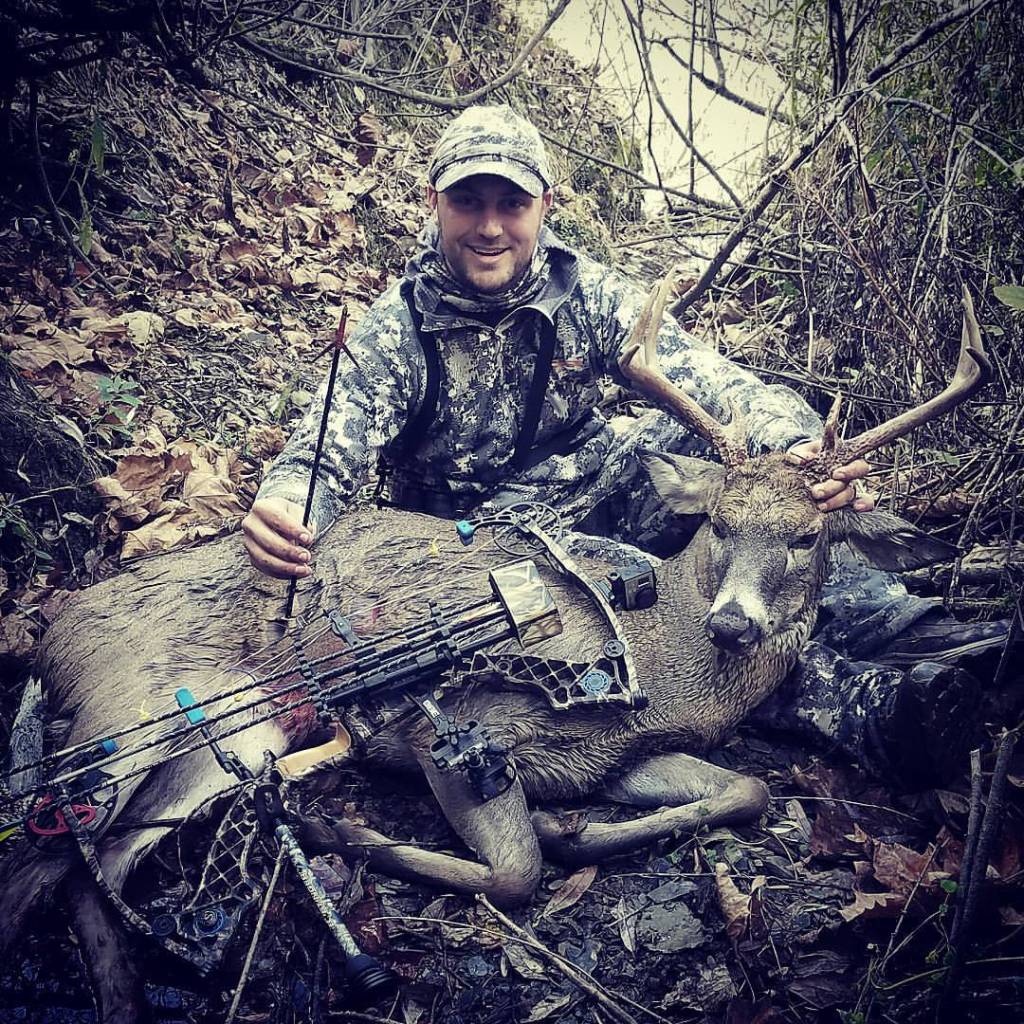
Dustin (Author) shot this buck in New York during a light rain in late October on Public Land.
Deer move in all sorts of weather. I'm not telling you to go out in the middle of a thunderstorm, but never waste a day because it's raining. Some of the biggest bucks and most mature bucks I've killed were ones I found in the rain on public land. Having a good, quiet set of rain gear can pay off huge dividends. I recommend the Sitka Gear rain gear, Walls Pro Series Silent Storm or the Cabela's Space Rain Gear for rain, as this gear is long-lasting, comfortable and of course weather-resistant.
Regardless of the conditions, deer are slaves to their stomachs. They'll require water and food no matter the conditions. If you aren't afraid to get wet, put in the work and get out there when other hunters normally wouldn't, you could find yourself filling your tag.
All too often, we read articles on what works and what doesn't. Everyone has their tricks, trips and ideas for the best course of action to capitalize on a mature buck. The truth is many different tactics work for many different situations. Through experience, you'll find whether it's raining in October, snowing in December or hot in September, each time of the year and weather condition can change everything.
Going out on a limb and not sticking to the same routine can pay off tremendously if you have the patience!
Like what you see here? You can read more articles by Dustin Prievo here. Follow him and his hunting team, Top Pin Outdoors, on Twitter, Facebook and Instagram.
NEXT: 5 TIPS FOR SUCCESSFUL WARM WEATHER HUNTING
WATCH
